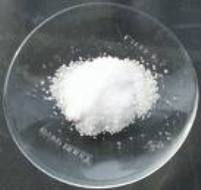Hungry for interesting facts about lithium?

Scroll down to learn about:
1. Lithium on the Periodic Table.
2. Lithium as an Element.
3. Uses of Lithium.
4. History of Lithium.
5. Lithium Statistics.
(And make sure you watch the Lithium 101 video half-way down)
Lithium on the Periodic Table
Lithium on the periodic table is a chemical element among the alkali metals, and is the least dense solid element.
The periodic table of the chemical elements is a tabular method of displaying the chemical elements.
The most interesting facts about lithium in this context are:
- Name: Lithium
- Symbol: Li
- Atomic number: 3
- Atomic weight: [6.941 (2)]
- CAS Registry ID: 7439-93-2
- Group number: 1
- Group name: Alkali metal
- Period number: 2
- Block: s-block
What do these interesting facts about lithium on the periodic table actually mean?
- Name: Lithiumderives from the Greek word lithos for stone.
- Symbol: a chemical symbol generally comes from its Latin name. It is an abbreviation or short representation of the name of a chemical element.
- Atomic number: a characteristic property of an element, equal to the number of protons in the nucleus.
- Atomic weight: actually the relative atomic mass – the ratio of the average mass per atom of the naturally occurring form of an element to 1/12 of the mass of nuclide.
- CAS Registry ID: unique numerical identifiers for chemical compounds, polymers, biological sequences, mixtures and alloys. The American Chemical Society assigns these to every chemical in order to make database searches more convenient, as chemicals often have many names.
- Group number: Number given to the alkali metals that make up the first 6 elements on the periodic table.

- Group name: The alkali metals are a series of elements comprising lithium, sodium, potassium, rubidium, caesium and francium. The alkali metals provide one of the best examples of group trends in properties in the periodic table, with well characterized homologous behavior down the group. The alkali metals are all highly reactive and are rarely found in elemental form in nature.
- Period number: periods are horizontal rows in the periodic table. Each period begins with an alkali metal and ends with a noble gas.
- Block: s-block of the periodic table consists of the first two groups: the alkali metals and alkaline earth metals, plus hydrogen and helium. These elements are distinguished by the property that in the atomic ground state, the highest-energy electron is in an s-orbital. Except in hydrogen and helium, these electrons are very easily lost to form positive ions.
So interesting facts about lithium are not limited to lithium’s many uses, but also the element lithium itself.
Lithium as an element
Lithium is a chemical element among the alkali metals, and is the least dense solid element.
Lithium has the symbol Li and the atomic number 3.
The name lithium comes from the Greek word lithos for stone.
History of lithium
Lithium was first used in 2nd century AD by the ancient physician Soranus of Ephesus. Soranus discovered the alkaline waters of his town could be used as a treatment for both mania and depression. It turns out these waters have very high levels of lithium.1
However, Soranus was not aware of lithium specifically and did not isolate the element. Johan August Arfvedson, a Swedish chemist, discovered lithium in ore from a Swedish iron mine in 1817. William Thomas Brande and Sir Humphry Davy used electrolysis on lithium oxide to isolate the element in 1818.
However, it was the Australian doctor, John Cade, who first discovered the role of lithium in controlling bipolar symptoms. Click here for a detailed review of everyone involved in discovering lithium.
Lithium uses
Lithium has the highest specific heat of any solid element and is used in heat transfer applications. It is also very light and very strong. It therefore has an astounding number and variety of uses. Just a sample of these are:
Reminder
Lithium proved that drugs could successfully treat psychiatric disorders.
1. As a medicine to treat bipolar symptoms
2. Makes concrete harden faster
3. Added to molten glass, it makes the glass lighter and stronger
4. Is an effective power source for small, long-life batteries
5. Kills algae
6. Can be mixed with oils to make all-purpose and high-temperature lubricants
7. Is used to absorb carbon dioxide in space vehicles
8. Lithium hydride is used to inflate life boats
9. Lithium deuteride is used as the explosive agent in H-bombs.
Lithium statistics
In 2018, lithium consumption in the United States was estimated to be 3,000 metric tons of contained lithium, up 33% from 2000 metric tons in 2015.
The main markets for lithium as follows:
1. Batteries 65%
2. Ceramics and glass 18%
3. Lubricating greases 5%
4. Pharmaceuticals and polymers 3% (Of note, lithium is currently estimated to the 180th most prescribed drug in the U.S. with 3,358,268 prescriptions in 2017)3
5. Air conditioning 1%
6. Continuous casting mold flux powders 3%
6. Other uses 5%.
The global market for lithium batteries has been increasing by more than 20% per year in the past few years.
Lithium-ion and lithium-polymer batteries appear to have the greatest potential for growth. The world market for these rechargeable batteries was estimated to be $94.4 billion by 2025.
See the sources for the above, and other intriguing lithium statistics in the US Geological Survey 2006 Minerals Yearbook: Lithium.
More interesting facts about lithium
This is an excellent site with lithium facts from About.com with a lot of scientific information.
And, of course, the Bipolar Lives Lithium page is loaded with interesting facts about lithium, links and a useful overview.2
 Medically reviewed by
Medically reviewed by